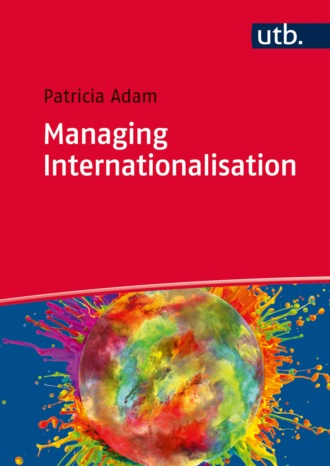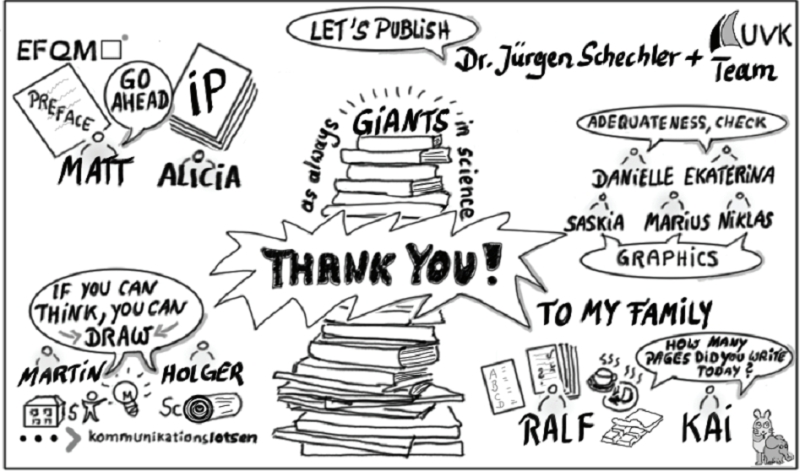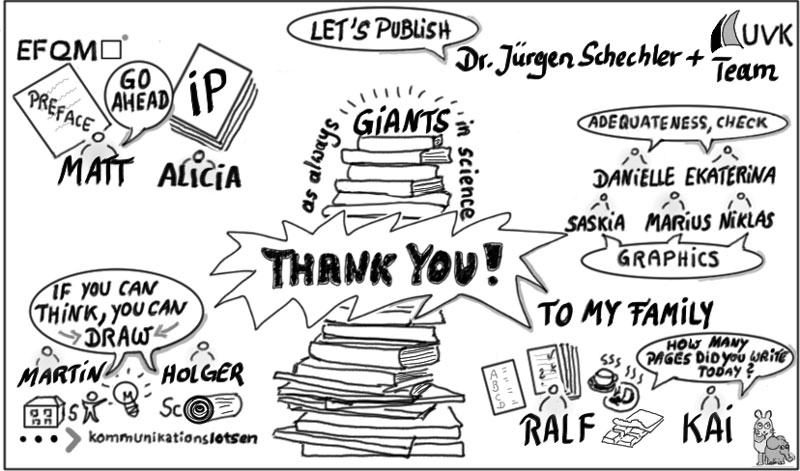
Полная версия
Managing Internationalisation


Eine Arbeitsgemeinschaft der Verlage
Böhlau Verlag · Wien · Köln · Weimar
Verlag Barbara Budrich · Opladen · Toronto
facultas · Wien
Wilhelm Fink · Paderborn
A. Francke Verlag · Tübingen
Haupt Verlag · Bern
Verlag Julius Klinkhardt · Bad Heilbrunn
Mohr Siebeck · Tübingen
Nomos Verlagsgesellschaft · Baden–Baden
Ernst Reinhardt Verlag · München · Basel
Ferdinand Schöningh · Paderborn
Eugen Ulmer Verlag · Stuttgart
UVK Verlagsgesellschaft · Konstanz, mit UVK/Lucius · München
Vandenhoeck & Ruprecht · Göttingen · Bristol
Waxmann · Münster · New York
Dedication
Für alle, die Elefanten das Fliegen beibringen

For all those who teach elephants how to fly
Patricia Adam
Managing Internationalisation
UVK Verlagsgesellschaft mbH · Konstanz
mit UVK/Lucius · München
Online-Angebote oder elektronische Ausgaben sind erhältlich unter
www.utb-shop.de.
Bibliografische Information der Deutschen Bibliothek
Die Deutsche Bibliothek verzeichnet diese Publikation in der Deutschen Nationalbibliografie; detaillierte bibliografische Daten sind im Internet über
Das Werk einschließlich aller seiner Teile ist urheberrechtlich geschützt.
Jede Verwertung außerhalb der engen Grenzen des Urheberrechtsgesetzes ist ohne Zustimmung des Verlages unzulässig und strafbar. Das gilt insbesondere für Vervielfältigungen, Übersetzungen, Mikroverfilmungen und die Einspeicherung und Verarbeitung in elektronischen Systemen.
© UVK Verlagsgesellschaft mbH, Konstanz und München 2015
Einbandgestaltung: Atelier Reichert, Stuttgart
Coverbild: ©Jag-cz – Fotolia.com
UVK Verlagsgesellschaft mbH
Schützenstr. 24 ·78462 Konstanz
Tel. 07531-9053-0 ·Fax 07531-9053-98
www.uvk.de
UTB-Nr. 8616
E-Book ISBN 978-3-8463-8616-3
eBook-Herstellung und Auslieferung:
Brockhaus Commission, Kornwestheim
www.brocom.de
Preface
Despite being popular with thousands of organisations worldwide, the EFQM Excellence Model is still hardly recognised by the academic community. Unfortunately, it shares this fate with other holistic models. Textbooks about International Management usually present holistic management models as an afterthought or in a niche chapter, but hardly focus on their inner logic or unique management perspective. Although the awareness of the need for leadership guidance in the ever more complex global environment is apparent, the contribution of these models is often overlooked.
We were therefore delighted when the author, Patricia Adam, approached us and explained her intention to create a textbook that bridged the gap between management reality and academic development. By drawing on her own experience of using the EFQM Model in self-assessment and Award Assessments, this book is intended to give the reader practical insights, combined with the conscientious use of business-related research findings. Whilst this might seem like a “common sense” approach, it’s been proven all too often that “common sense ain’t that common”. This makes the book a great companion for students and management practitioners alike; a pragmatic guide that translates the theory into practical application, with relevant examples and illustrations.
We wish this unique book an excellent reception and its author many positive reviews… although (sorry Patricia) we also hope it doesn’t remain unique for too much longer. May this book support international leaders in their demanding pursuit of successful internationalisation and inspire students to put theory into practice. After all, theory without experience is only theory!
Matt Fisher
Chief Operating Officer EFQM
Acknowledgements

Table of Contents
Preface
Acknowledgements
Table of Figures
1Introduction and Overview Strategic International Management1.1Introduction1.1.1How to Use This Book1.1.2From Gradual Globalisation to Transnational OrganisationsVIPs1.2The Use of Holistic Management ModelsVIPs1.3The Approach of the EFQM Excellence Model1.3.1Background Information: The EFQM and its Model1.3.2The Fundamental Concepts of Excellence1.3.3The EFQM Excellence Model Framework 20131.3.4The EFQM RADAR LogicVIPs1.4Process Model “Managing Internationalisation”1.5Citations & Notes2Key Issue: Developing Cross-Cultural Competence2.1The Importance of Intercultural Understanding for International Business Issues2.2Hofstede’s Framework: Cultures and Organisations2.2.1Culture as a Part of Human Mental ProgrammingVIPs2.2.2An Introduction to Hofstede’s Dimensions2.2.3Power Distance2.2.4Individualism/Collectivism2.2.5Masculinity/Femininity2.2.6Uncertainty Avoidance2.2.7Long-Term Orientation2.2.8Establishing Country Clusters2.2.9Adding a New Dimension: Indulgence versus RestraintVIPs2.3The Dilemma Approach of Trompenaars & Hampden-Turner2.3.1A View of Culture Based on DilemmasVIPs2.3.2Universalism versus Particularism2.3.3Individualism versus Communitarianism2.3.4Neutrality versus Affection2.3.5Specificity versus Diffusion2.3.6Achieved versus Ascribed Status2.3.7The Concept of Time2.3.8Inner versus Outer Direction2.3.9Reconciling DilemmasVIPs2.4Globe Study: More Issues ArisingVIPs2.5Critical Acclaim2.5.1Typical Problems of Cross-Cultural Research2.5.2Critical Acclaim of Hofstede’s Dimensions2.5.3Critical Acclaim of Trompenaars & Hampden-Turner’s Dilemmas2.5.4Critical Acclaim of the GLOBE Study2.6Citations & Notes3Leading the Internationalisation Process3.1Good Leadership3.1.1The Coherent Leadership ApproachVIPs3.1.2Excellent Leaders: EFQM Criterion 13.2Developing the Mission, Vision, Values and Ethics3.2.1Defining and Communicating the Core Purpose of an OrganisationVIPs3.2.2Acting as Role Models for Ethical Behaviour3.2.2.1Corporate Ethics and Social Responsibility3.2.2.2Ethical Behaviour in International BusinessVIPs3.2.3Communicating Direction and Uniting the Organisation’s People3.2.5Developing and Reviewing Leadership Culture3.2.5.1Developing and Supporting a Shared Leadership Culture3.2.5.2Reviewing and Improving Leadership BehaviourVIPs3.3Driving Performance and Engaging with External Stakeholders3.4Reinforcing a Culture of Excellence3.4.1Developing an Excellent Organisational Culture3.4.2Promoting and Encouraging DiversityVIPs3.5Managing ChangeVIPs3.6Citations & Notes4Defining and Delivering an International Strategy4.1Strategy and the Strategy Management Process4.1.1Popular Strategy Definitions4.1.2Comprehensive Strategy Management Processes: EFQM Criterion 24.2Scanning the Environment4.2.1Understanding the Needs and Expectations of Stakeholders4.2.2Analysing Industry and Markets4.2.3Identifying and Understanding Environmental Key Trends4.2.4Predicting Future Developments and ChangesVIPs4.3Analysing Internal Performance4.3.1Understanding Operational Performance and Capabilities4.3.2Determining Competencies of Partners and Potential Impacts of Changes.4.3.3Bringing It All Together: PortfoliosVIPs4.4Developing the Strategy4.4.1Strategy Levels4.4.2Generating a Sustainable Business Model4.4.3Business Model Choices4.4.4Establishing a Strategy Development ProcessVIPs4.5Communicating and Implementing the Strategy4.6Citations & Notes5Deploying Strategy through People5.1International Human Resource Management5.1.1The International HRM Function5.1.2Managing People: EFQM Criterion 35.2Supporting the Strategy through People Plans5.2.1Steering Human Resource Management StrategicallyVIPs5.2.2Planning Global MobilityVIPs5.2.3Closing the Loop: People FeedbackVIPs5.3Developing People and Their Performance5.3.1Developing People’s Skills and CompetenciesVIPs5.3.2Helping People to Improve Their PerformanceVIPs5.3.3Appraising Performance Systematically5.3.4Empowering and Involving PeopleVIPs5.4Communicating EffectivelyVIPs5.5Recognising PeopleVIPsCitations & Notes6Managing International Partners and Resources6.1A Broad View on Resources: EFQM Criterion 46.2Establishing International Partnerships for Mutual Benefit6.2.1Selecting an Appropriate Foreign Operation Mode6.2.1.1Cross-Border Strategic AlliancesVIPs6.2.1.2Contractual Agreements in International Operations6.2.1.3International Joint Ventures6.2.1.4Mergers & Acquisitions across Borders and Cultures6.2.2Managing International PartnersVIPs6.3Managing Finance and Governance Processes6.3.1Optimising Organisational Financial ManagementVIPs6.3.2Ensuring ComplianceVIPs6.3.3Managing RisksVIPs6.4Managing Knowledge and Information6.4.1Managing Knowledge SystematicallyVIPs6.4.2Establishing Integrated (Management) Information Systems6.5Citations & Notes7Managing Processes and Products Globally7.1Delivering Stakeholder Value: EFQM Criterion 57.2Managing ProcessesVIPs7.3Managing Products and Services Based on ISO 90017.3.1Introducing a Certifiable Quality Management SystemVIPs7.3.2Managing Products and Services GloballyVIPs7.3.3Enhancing Customer Relationships7.4Citations & Notes8Achieving and Monitoring Balanced Results8.1EFQM Results Criteria8.2Introducing the Balanced Scorecard ConceptVIPs8.3Monitoring Achievements by Designing Meaningful DashboardsVIPs8.4Citations & Notes9Assessing the Organisation’s Management Model9.1Establishing Strategy Reviews for Continuous ImprovementVIPs9.2Implementing Self-Assessments9.2.1Introducing Self-Assessment ToolsVIPs9.2.2Conducting a Simulated Award AssessmentVIPs9.3Achieving External Recognition and Winning Excellence AwardsVIPs9.4Citations & NotesReferences
List of Abbreviations
Glossary
Index
Table of Figures
Figure 1-1Concept Map “Introduction and Overview”Figure 1-2Symbols Used for Special Information Employed Throughout this BookFigure 1-3Multi-Faceted Motives for Internationalisation ProcessesFigure 1-4The Global Integration/Local Responsiveness FrameworkFigure 1-5Survey of the New St. Gallen Management ModelFigure 1-6Baldrige Criteria for Performance Excellence Framework 2015Figure 1-7EFQM Fundamental Concepts of ExcellenceFigure 1-8EFQM Fundamental Concepts - Definitions and Best PracticesFigure 1-9The EFQM Excellence Model Framework 2013Figure 1-10Definitions of the EFQM Enabler CriteriaFigure 1-11Definitions of the EFQM Results CriteriaFigure 1-12Exemplary Levels of the EFQM Excellence ModelFigure 1-13Exemplary Red Threads Through the EFQM Excellence ModelFigure 1-14The EFQM RADAR® LogicFigure 1-15The Internationalisation ProcessFigure 2-1Concept Map “Cross-Cultural Competence”Figure 2-2The Cultural IcebergFigure 2-3Developmental Model of Intercultural SensitivityFigure 2-4Three Levels of Uniqueness in Human Mental ProgrammingFigure 2-5The Hofstede Onion - Manifestations of CultureFigure 2-6Hofstede’s Five Dimensions as a Control PanelFigure 2-7Key Differences between Cultures with Small and Large PDIFigure 2-8Selected PDI Country RatingsFigure 2-9PDI Values for Six Categories of OccupationsFigure 2-10Key Differences between Cultures with Small and Large INDFigure 2-11Selected IND Country RatingsFigure 2-12Key Differences between Feminine and Masculine CulturesFigure 2-13Selected Country Scores for MASFigure 2-14Key Differences between Cultures with Weak and Strong UAIFigure 2-15Selected Country Scores for UAIFigure 2-16Key Differences between Cultures with high or low LTOFigure 2-17Selected Country Scores for LTO (WVS)Figure 2-18Cultural Cluster of Germanic CountriesFigure 2-19Country Clusters Based on the Four Original Hofstede DimensionsFigure 2-20Key Differences between Indulgent and Restrained CulturesFigure 2-21Selected Country Scores for IVRFigure 2-22Cultural differences Expressed as Normal DistributionsFigure 2-23Percentages Opting for Telling the TruthFigure 2-24Typical Characteristics of Universalistic vs. Particularistic CulturesFigure 2-25Percentages Opting for Individual FreedomFigure 2-26Percentages Opting for Not Expressing Emotions OvertlyFigure 2-27Percentages Not Painting the HouseFigure 2-28Percentages Opting for Getting Things DoneFigure 2-29Circle Diagrams for Past, Present and FutureFigure 2-30Differences of Past, Present and Future OrientationFigure 2-31Average Time HorizonFigure 2-32Percentages Agreeing to What Happens to Me is My Own DoingFigure 2-33The Three-Step-ApproachFigure 2-34Reconciling Globalism and LocalismFigure 2-35GLOBE - Nine Cultural DimensionsFigure 2-36GLOBE - Country ClustersFigure 3-1Concept Map “Leading the Internationalisation Process”Figure 3-2Aspects Influencing Leadership SuccessFigure 3-3One-Dimensional Behavioural Leadership Theories Based on ParticipationFigure 3-4Two-Dimensional Behavioural Leadership TheoriesFigure 3-5Contingency ModelsFigure 3-6Relationship-Based Leadership ApproachesFigure 3-7The Big Five Personality Factors and Their FacetsFigure 3-8EFQM Criterion 1 “Leadership” and Its Criterion PartsFigure 3-9EFQM Criterion Part 1a and Its Guidance PointsFigure 3-10Corruption Risks Within Domains of Corporate ActivitiesFigure 3-11Percentages Opting for Blaming an IndividualFigure 3-12GLOBE - Six Global Leader BehavioursFigure 3-13JOHARI Window and the Importance of FeedbackFigure 3-14360° FeedbackFigure 3-15Trompenaars and Hampden-Turner’s Four Corporate CulturesFigure 3-16Preferences for Corporate Cultures in Different CountriesFigure 3-17Dimensions of DiversityFigure 3-18Lewin’s Three Steps of ChangeFigure 3-19Eight Steps for Leading ChangeFigure 4-1Concept Map “Defining and Delivering an International Strategy”Figure 4-2Strategy Development and Implementation – OverviewFigure 4-3EFQM Criterion 2 “Strategy” and Its Criterion PartsFigure 4-4Environmental ScanFigure 4-5Generalised Stakeholder MapFigure 4-6Industry Analysis Based on Porter’s Five Forces (Expanded Model)Figure 4-7Overview Competitor AnalysisFigure 4-8Selected PESTEL VariablesFigure 4-9Sources for Analysing Countries and MarketsFigure 4-10The Global Competitiveness Index FrameworkFigure 4-11Sample Steps of a Scenario AnalysisFigure 4-12Issues Priority Matrix for Key Driver SelectionFigure 4-13Levels of Competence SustainabilityFigure 4-14Organisational Analysis Based on Porter’s Value ChainFigure 4-15SWOT AnalysisFigure 4-16Great Jeans’ SWOT MatrixFigure 4-17Choice of Location and MarketFigure 4-18The Growth-Share Matrix (BCG-Matrix)Figure 4-19Different Strategy LevelsFigure 4-20The Nine Building Blocks of the Business Model CanvasFigure 4-21Sketch of Great Jeans Canvas (Basic Model)Figure 4-22Epicentres of Business Model InnovationFigure 4-23Great Jeans’ Innovative Business ModelFigure 4-24Porter’s Three Generic StrategiesFigure 4-25A Selection of Business ModelsFigure 4-26Patterns of Business Models on Business Model CanvasFigure 4-27Business Model Development ProcessFigure 4-28From Purpose to Strategy ImplementationFigure 5-1Concept Map “Deploying Strategy through People”Figure 5-2The Human Resource Management ProcessFigure 5-3Labour Regulation Aspects in International HRMFigure 5-4EFQM Criterion 3 “People” and Its Criterion PartsFigure 5-5Four Generic HRM StrategiesFigure 5-6Internationalisation Strategies and HRM PoliciesFigure 5-7The Optimal Global Assignment ProcessFigure 5-8Phases in Cultural Adjustment – Customised W-CurveFigure 5-9People PortfoliosFigure 5-10Obtaining FeedbackFigure 5-11KODE® Enhanced Atlas of CompetenciesFigure 5-12KODE®X ProcessFigure 5-13Levels of Hypercultural CompetenceFigure 5-14Drivers of Motivation ProcessesFigure 5-15Kehr’s 3K-Model of Work MotivationFigure 5-16Job Characteristics ModelFigure 5-17Heckhausen’s Model of Achievement MotivationFigure 5-18Attribution Characteristics and Their Influence on MotivationFigure 5-19Reconciling the Reward Dilemma through Co-OpetitionFigure 5-20Team Empowerment DilemmaFigure 5-21Control & Autonomy DilemmaFigure 5-22Multiple Dimensions of Inter-Organisational CommunicationFigure 5-23The Communication Tool Cube for Internal CommunicationFigure 5-24Characteristics of Low and High Context CommunicationFigure 5-25Work/Life Balance - Causes, Nature and ConsequencesFigure 6-1Concept Map “Managing International Partners and Resources”Figure 6-2EFQM Criterion 4 “Partnerships & Resources” and Its Criterion PartsFigure 6-3Overview of Foreign Operation ModesFigure 6-4Characteristics of Selected Foreign Operation ModesFigure 6-5Relevant Fits in Strategic AlliancesFigure 6-6Pitfalls of Strategic AlliancesFigure 6-7Typical Forms of Licensing AgreementsFigure 6-8Approaches to Joint Venture ManagementFigure 6-9Chosen Perspectives on M&A StrategiesFigure 6-10Synergies and Barriers of M&A ProjectsFigure 6-11Varieties of Acculturation in M&A ProcessesFigure 6-12Guiding Matrix for Make-or-Buy DecisionsFigure 6-13Organisational Financial Management - OverviewFigure 6-14The Three-Lines-of-Defence ModelFigure 6-15ISO High Level Structure for Management SystemsFigure 6-16Compliance Management Process Based on ISO 19600:2014Figure 6-17Risk Management Process Based on ISO 31000:2009Figure 6-18Sample Risk MapFigure 6-19Organisational Cultures and Risk OrientationFigure 6-20Knowledge DimensionsFigure 6-21Organisational Learning CulturesFigure 6-22Organisational Knowledge Management Process and ActivitiesFigure 6-23Pyramid of Organisational Information SystemsFigure 7-1Concept Map “Managing Processes and Products Globally”Figure 7-2EFQM Criterion 5 “Processes, Products and Services” and Its Criterion PartsFigure 7-3From Function Orientation to Process OrientationFigure 7-4Aligning Process Management and Business StrategiesFigure 7-5Overview of Business Process ManagementFigure 7-6Sample Process DiagramsFigure 7-7Example of ARIS Items and Event-Driven Process ChainFigure 7-8BPM Process Levels in a Sample Process MapFigure 7-9The ISO 9000 Family of Quality Management StandardsFigure 7-10Mapping ISO/DIS 9001:2014 on the EFQM ModelFigure 7-11Structure of Quality Requirements for Value Creating ProcessesFigure 7-12How (Not) To Conduct an Optimal Product Design ProcessFigure 7-13Simple Supply Chain of Great JeansFigure 7-14A Global View on Great Jeans’ Supply ChainFigure 7-15Customer Relationship Management Based on the IDIC ApproachFigure 8-1Concept Map “Monitoring and Achieving Balanced Results”Figure 8-2EFQM Result Criteria and Their Criterion PartsFigure 8-3The Allocation of ResultsFigure 8-4Kaplan & Norton’s Balanced ScorecardFigure 8-5Balanced Scorecards Aligned Across All Organisational LevelsFigure 8-6Mapping the BSC Concept on the EFQM Excellence ModelFigure 8-7Poorly Designed DashboardFigure 8-8Adequate Dashboard for Great JeansFigure 9-1Concept Map “Assessing the Organisation’s Management Model”Figure 9-2Drucker’s Five Most Important Questions Asked about an OrganisationFigure 9-3Basic Self-Assessment ProcessFigure 9-4Classification of Different Self-Assessment ToolsFigure 9-5Self-Assessment Matrix of ISO 9004:2009 – Sample ElementFigure 9-6Exemplary Award Simulation ProcessFigure 9-7RADAR Elements for the Analysis of EnablersFigure 9-8Composition of the Enabler MatrixFigure 9-9RADAR Elements for the Analysis of ResultsFigure 9-10Criteria Weightings of the EFQM Excellence Model 2013Figure 9-11EFQM Recognition SchemeFigure 9-12Global Distribution of Awards Using the EFQM or Baldrige ModelFigure 9-13Overview of EEA and MBNQA Award CategoriesWelcome to the fascinating world of international organisations. This book will introduce the internationalisation process in its rich diversity and sometimes astonishing complexity. Each section is preceded by learning objectives that explain the knowledge gained in reading through the subsequent pages. The objectives for section one are presented here:

Readers are able to navigate effortlessly through the book and its supplementary information. They understand the concept of globalisation and related consequences from an organisational perspective. Readers also know how to correctly name and address motives for internationalisation processes and how to recognise their interdependencies. Forces for global integration and local responsiveness are familiar and different forms of internationally operating organisations can be distinguished. The contribution of holistic management models to supporting leadership decisions and activities is recognised. The most important international models can be classified. Readers are familiar with the general approach of the EFQM Excellence Model including its fundamental concepts and RADAR logic.
Learning objectives are always followed by a visual overview of the main issues covered in the respective section. Such a graphic is called a concept map. The map created for chapter 1 is supplied in Figure 1-1.

Figure 1-1: Concept Map “Introduction and Overview”
1.1Introduction 1.1.1How to Use This BookThis book is meant for everybody who seeks well-founded and practical advice on how to manage the internationalisation process of an organisation. It covers the internationalisation issue from a top management perspective and builds upon established and state-of-the-art methods, using a globally recognised holistic management model – the EFQM Excellence Model - as guidance. Therefore, it caters to the needs of different groups of readers:
Practitioners working for and with organisations that are on their way to becoming truly international,
students of business, economics and related sciences that want to prepare themselves for doing exactly that in their future career and
all people planning or conducting the implementation of a holistic management model (EFQM Excellence Model or Baldrige) in their organisations.
In order to facilitate the use of this book, supplementary information is provided for further illustrating the theoretical concepts discussed. This additional information is marked by distinct symbols, as listed in Figure 1-2.

Figure 1-2: Symbols Used for Special Information Employed Throughout this Book
The principles presented in this book are equally relevant for all kinds of organisations - companies, individual enterprises and non-profit organisations alike. Therefore, the term organisation instead of company is used consequently. However, in some parts for easier understanding the terms “business” or “business sectors” are utilised as many readers might find it easier to link the purpose of an organisation to the term “business” than to a more general description. In the sense used, non-profit organisations also have a business (or mission or duty) they pursue – which could be the business to save the environment or the business to protect people from injustice. The employment of classical management terminology should not distract from the fact that the principles and tools explained here are relevant for all imaginable international management situations.
1.1.2From Gradual Globalisation to Transnational OrganisationsGlobalisation, understood as the worldwide integration of cultures, political systems, markets, industries and economies, is a determinant in the management of contemporary organisations. Whether an organisation decides to join the international competition or decides to stay out – the issue has to be raised. A google search of the term “globalisation” produces presently 12 million hits within less than one second, which clearly illustrates its current relevance.



